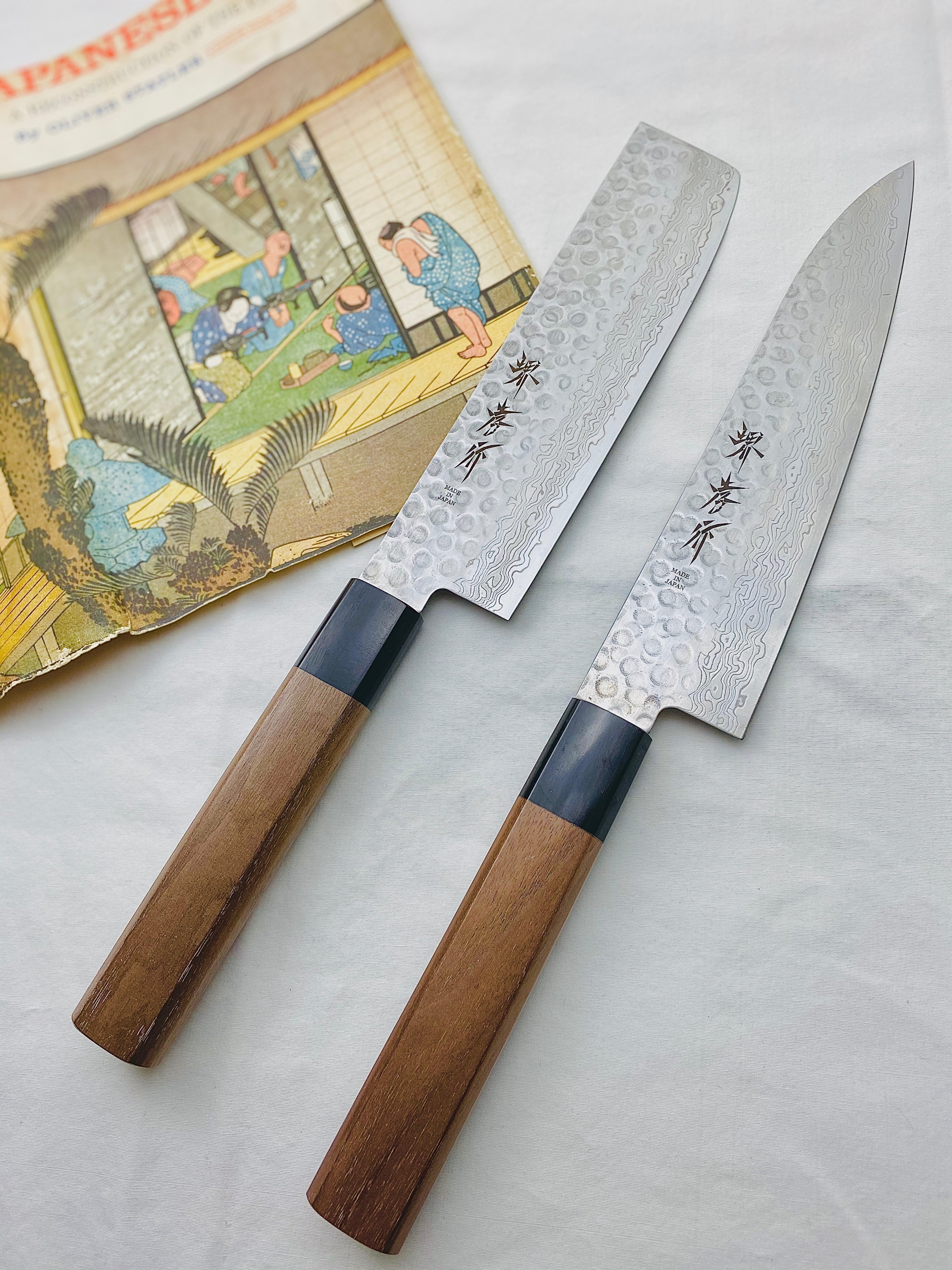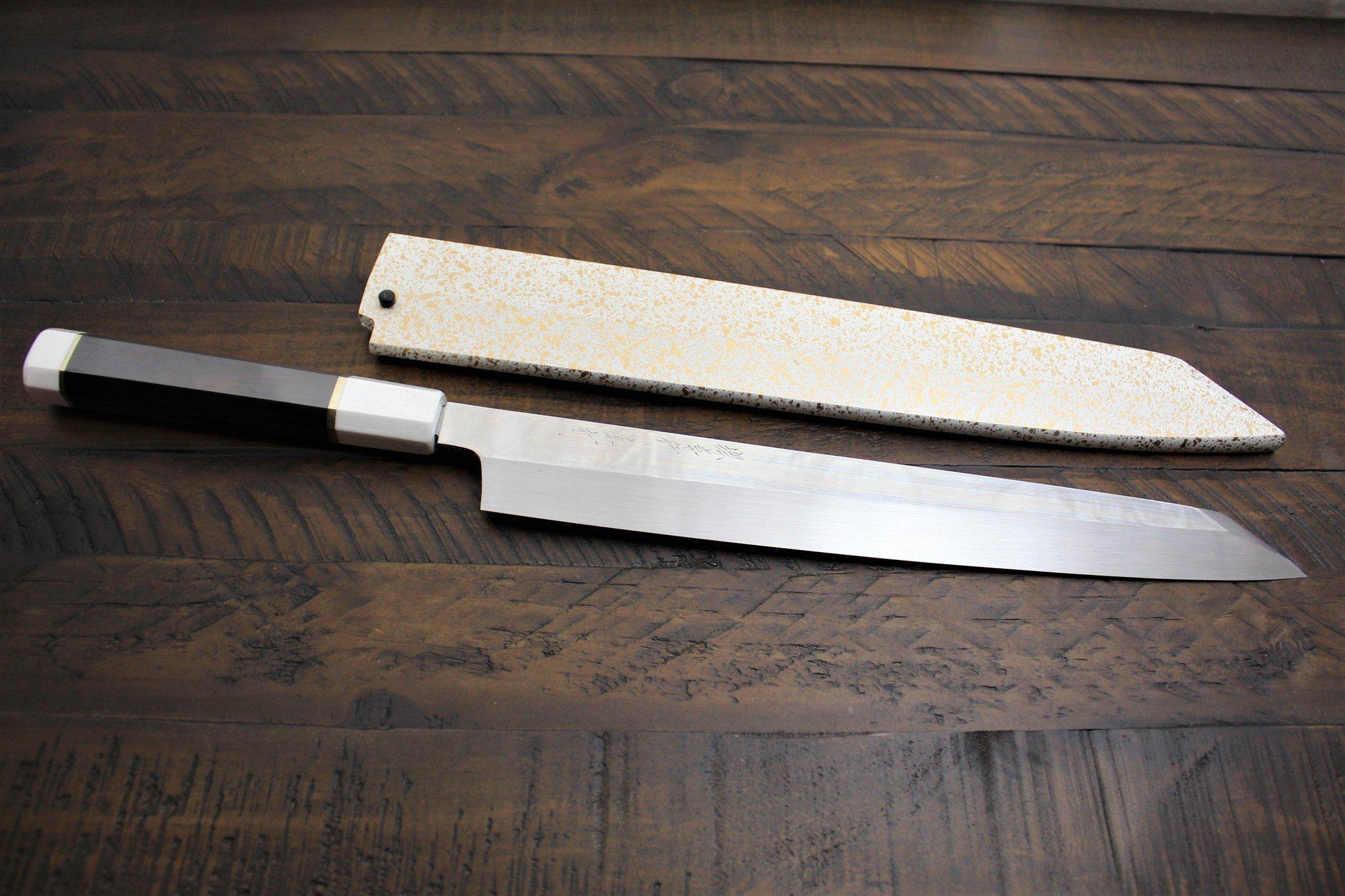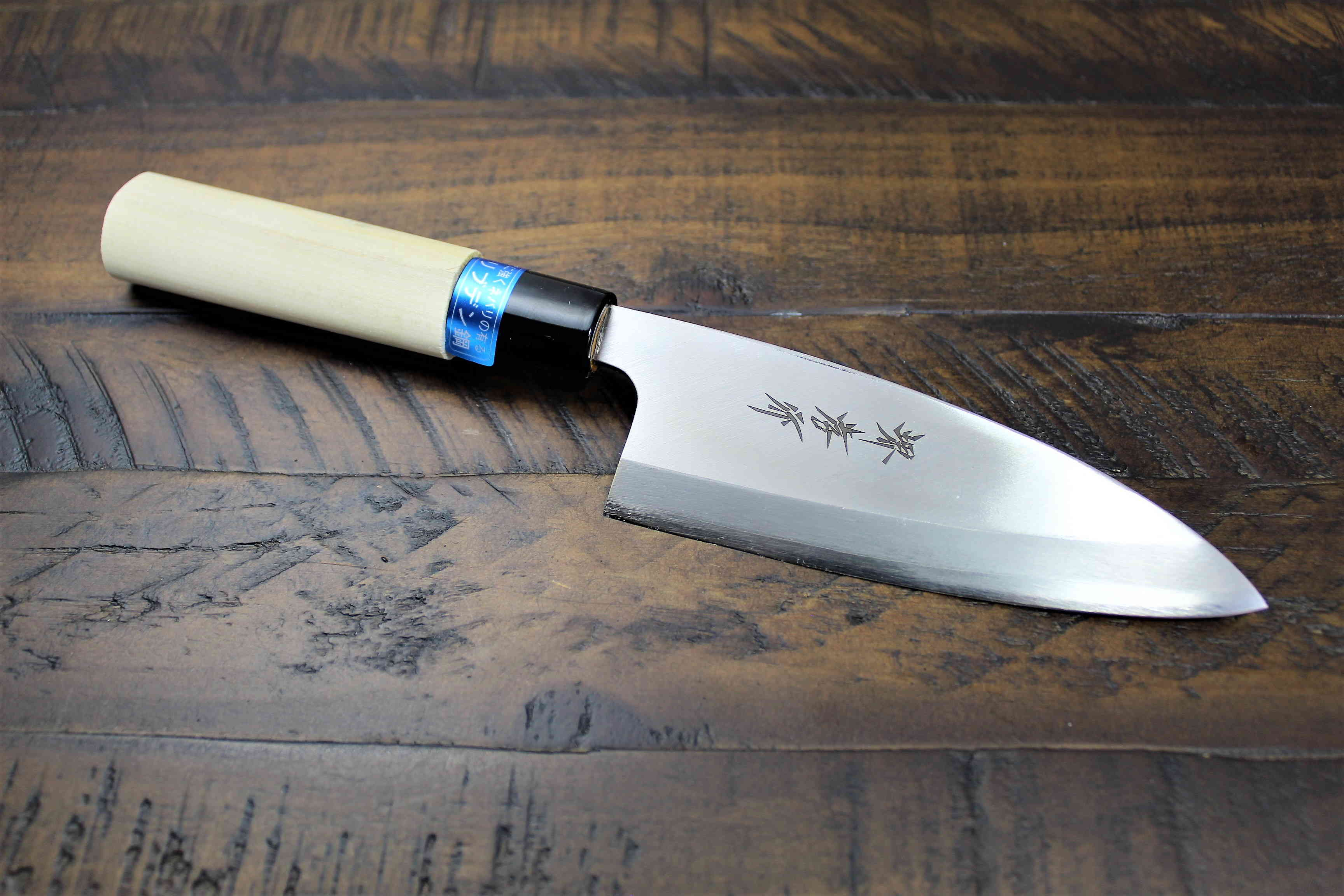
What is the Difference Between Nakiri and Santoku Knives?
There are many types of knives available that you might like to add to your collection. Any genuine knife enthusiast or professional who relies on knives daily knows the value of a well-rounded collection. No collection feels complete without at least one Japanese knife.
The Nakiri and Santoku are the two types of Japanese knives used the most in the Western world. If you’re deciding between the two, knowing the difference between Nakiri and Santoku knives can guide you to the right choice.
Understanding the Difference Between Nakiri and Santoku Knives
Both the Nakiri and Santoku knives serve different purposes and employ distinct cutting techniques and shapes. They may appear similar at first glance. However, their differences make each better suited for specific tasks.
Let’s examine the characteristics of these two knives below.
Overview of Nakiri Knives
The term "Nakiri" refers to a knife used for cutting greens or vegetables when translated from Japanese. The Nakiri knife is characterized by its straight-edge blade design that will additionally have a squared-off tip.
The design of the blade allows you to cut through the vegetables all the way when you use a horizontal pull and push motion. Additionally, you can achieve thinner and more evenly sliced pieces due to the knife's straight blade. Its length is around 6.5 to 7 inches.
Furthermore, you can use a smoother chopping stroke when slicing without rocking the blade because of its edge. People appreciate that the blade allows them to cut vegetables more precisely without squeezing them (i.e., tomatoes). The blade is lightweight and super simple to get razor-sharp.
The Nakiri knife allows you to make even slices with thin, uniform cuts. If you're looking for julienne or ribbon vegetables, this knife is your tool. It's fast and designed for speed. It delivers much quicker results with its clean chopping motion. And, its flat edge provides clean cuts and makes thorough contact with the cutting board. No longer will you have to deal with pieces of onion or bell pepper sticking together.
Benefits of Nakiri Knives
The main benefits of using a Nakiri knife are:
- More fluid chopping with its straight edge
- More even and thin-slicing
- Perfect for delicate vegetables
Santoku Knives Overview
This Japanese knife is a multipurpose knife that's extremely resourceful in the kitchen. The term Santoku, in Japanese, refers to a knife of three virtues. You would normally use it for cutting meat, vegetables, and fish.
The Santoku knife generally has a similar length (6 to 7 inches), making it more straightforward to handle. It also features a symmetrically ground blade with a 10 to 15-degree blade angle per side. Many individuals also appreciate the more balanced feel of the knife.
The shape of its blade is similar to a regular Chef's knife (also known as a Gyuto). However, the Santoku was originally designed for home use and tend to be slightly shorter than chef’s knives. Now, you will find them as fixtures in both home and professional settings.
Benefits of Santoku Knives
A few benefits of Santoku knives are:
- Well-balanced feel
- More versatile knife
- Useful for detailed work in addition to chopping and slicing
Difference Between the Nakiri and Santoku Knives
Here's a brief look at the primary differences between Nakiri and Santoku knives:
Nakiri
- Best use: Vegetables
- Blade length: 6.5 to 7 inches
- Blade design: Long, thin, straight, squared edges
- Cutting action: Slicing, straight up and down
- Edge grind: Double-bevel
- Sharpness: 20 to 30 degrees total
- Price: Similar to Santoku
- Weight: 5.0 to 7.5 ounces
Santoku
- Best use: Fruit, vegetables, fish, meat, and cheese
- Blade length: 6 to 7 inches
- Blade design: Long, thin, straight edge with rounded tip
- Cutting action: Slicing, rocking, straight up and down
- Edge grind: Some are singles; most are double-bevel
- Sharpness: 20 to 30 degrees total
- Price: Similar to Nakiri
- Weight: 5.5 to 7.5 ounces
Uses of Nakiri and Santoku
The Nakiri knife resembles a meat cleaver. But its use is much different as cleavers are typically heavier blades with more obtuse edge grinds to be more durable. Since it has a straight blade, it provides a significant amount of the strength required for cutting on a chopping board.
You don’t need to pull or push when using it, unlike other types of knives. Since you're cutting in a single, straightforward motion, it allows for better control and smoother cuts and helps you slice through vegetables cleanly without damaging them.
The Santoku knife has a slightly thinner blade, which makes it perfect for precision slicing. It also excels at dicing and mincing. Unlike some Western knives with rounded edges, Santoku knives typically feature more of a flat blades, which contribute to their accuracy and consistency. However, each knife maker has their own take on each of the designs so if you’re unsure while shopping please reach out.
Nakiri vs. Santoku: Is One Better Than the Other?
This is a very subjective question. Santoku knives are a lot more popular with Western chefs, on the whole. This is likely due to them having all-purpose features. They’re frequently used as a replacement for a Chef’s knife (Gyuto). They’re thin, long, and sharp - ideal for cutting various foods.
However, this doesn’t lower the value of a Nakiri knife. They’re perfect for chopping and slicing vegetables, greens, and fruits. Because they have a tall blade and no point, they're typically the safer choice in your kitchen when using the knife to slice vegetables.
At Hasu-Seizo, we specialize in artisan Japanese knives. Our selection features a diverse range of Nakiri and Santoku knives by skilled blacksmiths who respect tradition with exceptional performance. When you're ready to experience the real difference between Nakiri and Santoku knives, explore our collection. Enhance your prep work with precision, balance, and beauty today.




